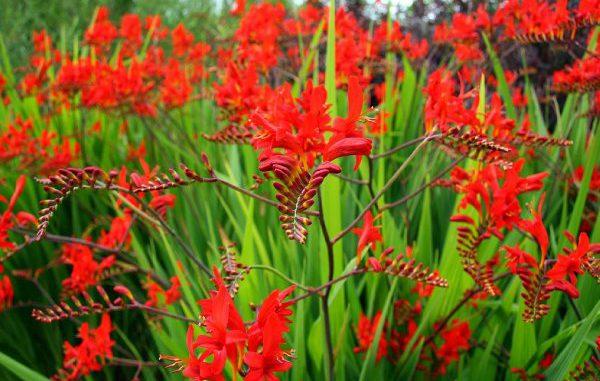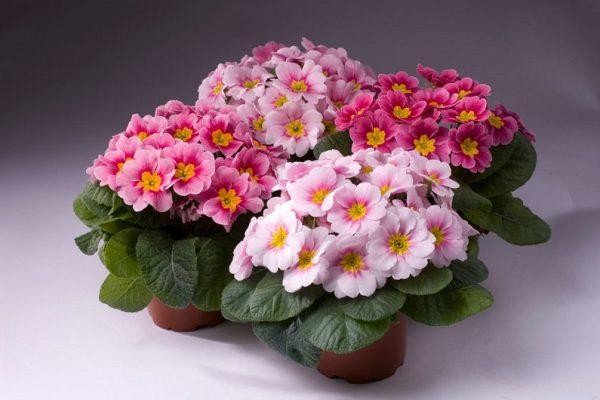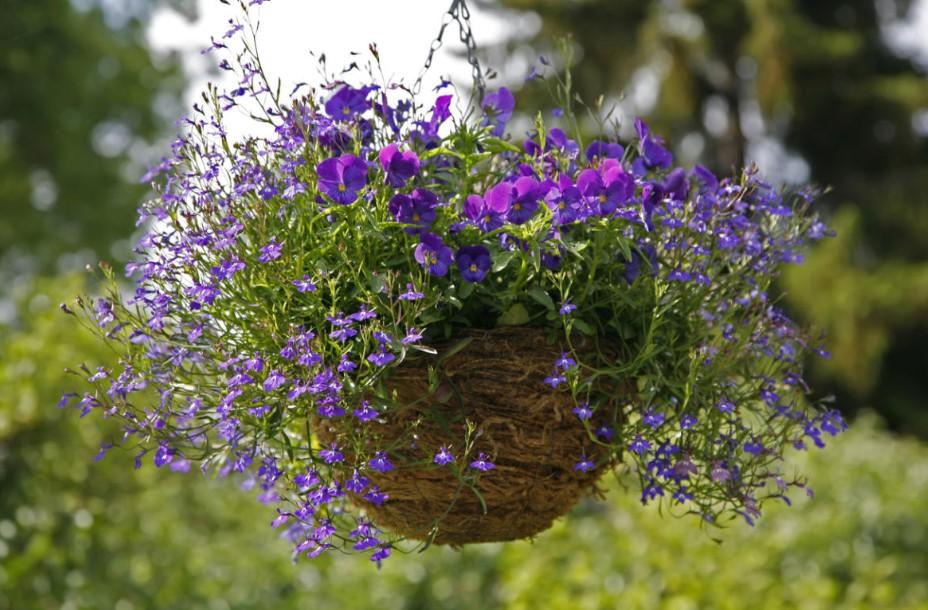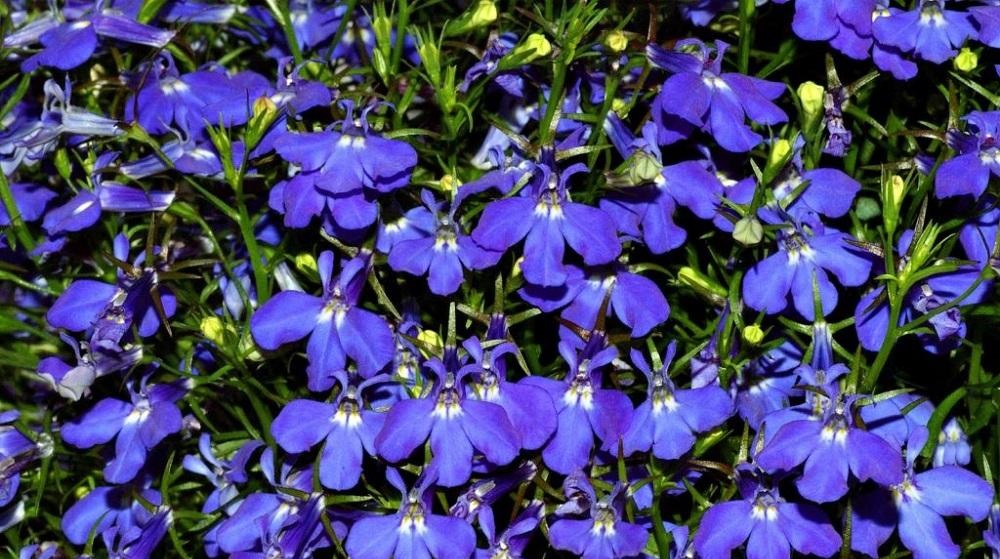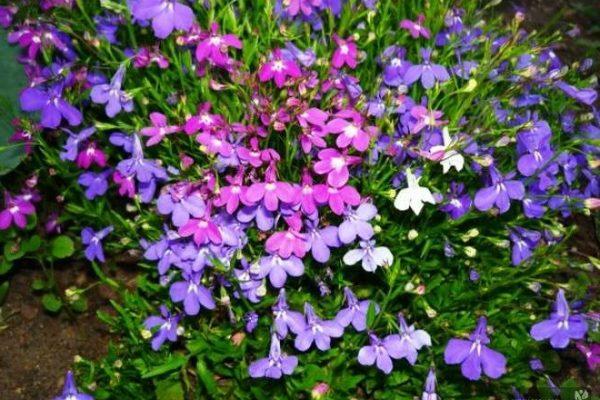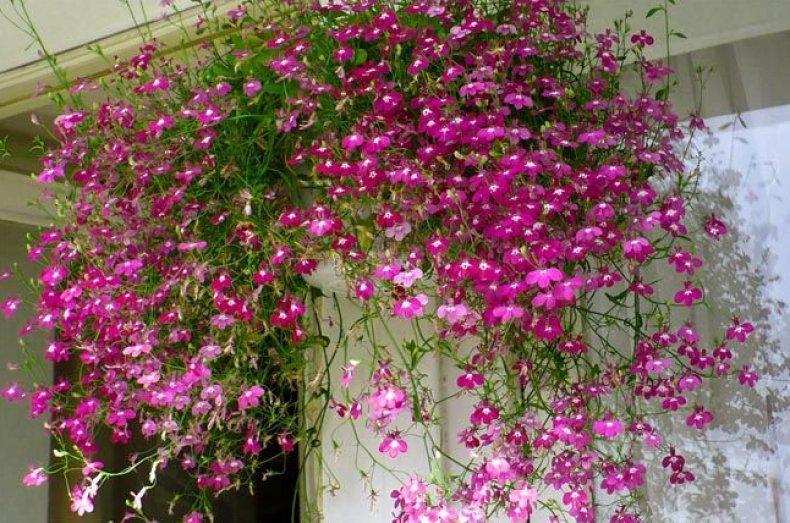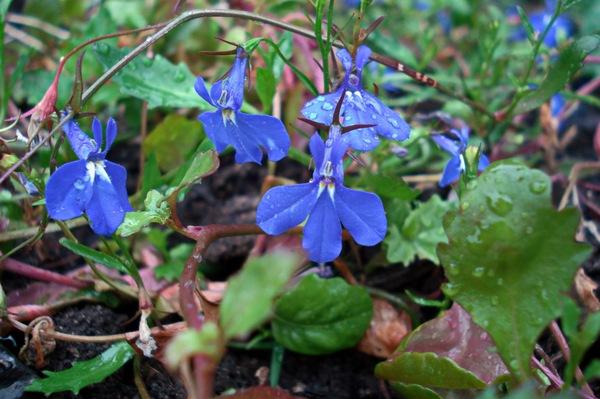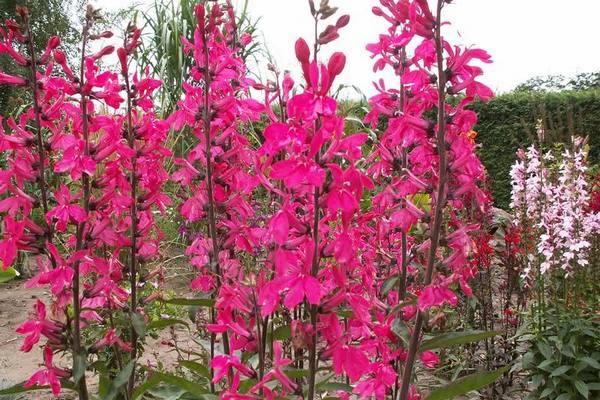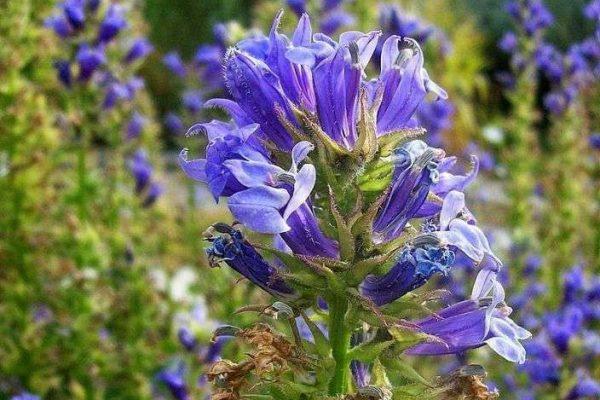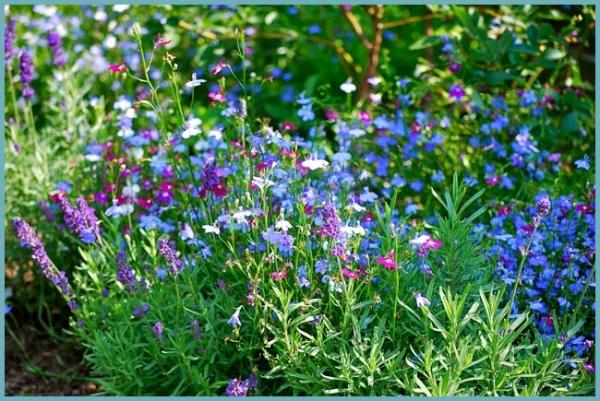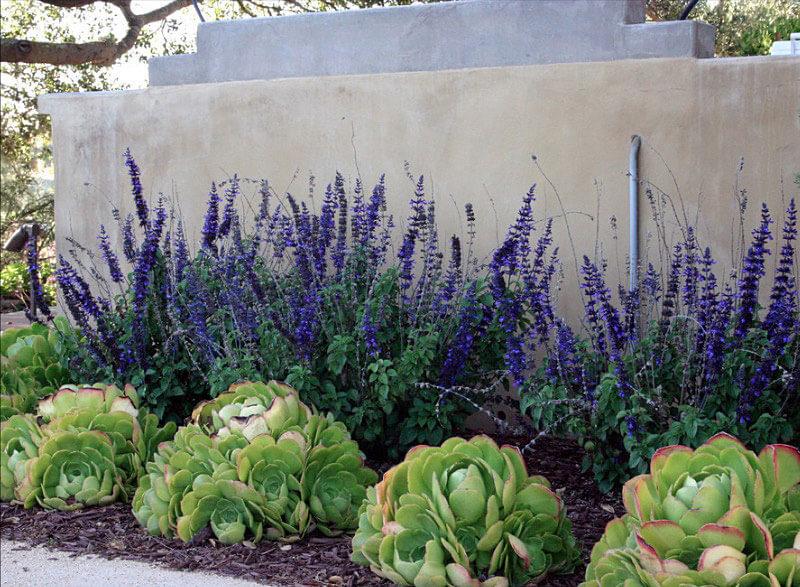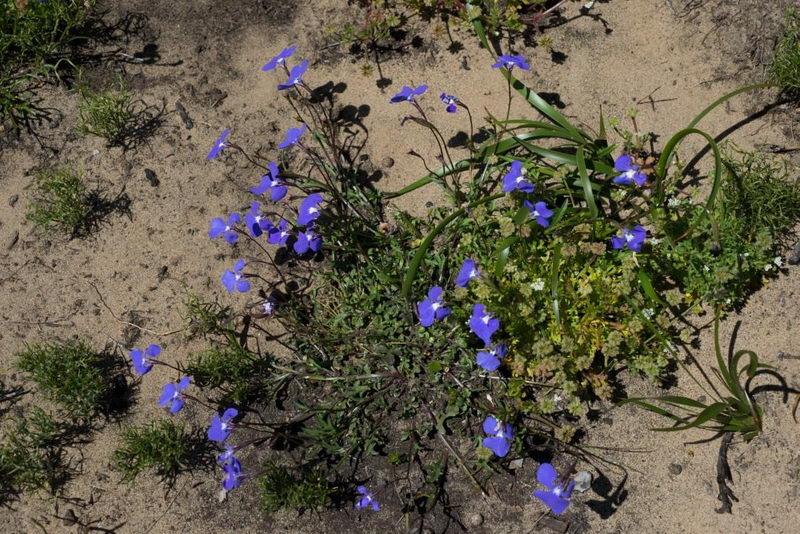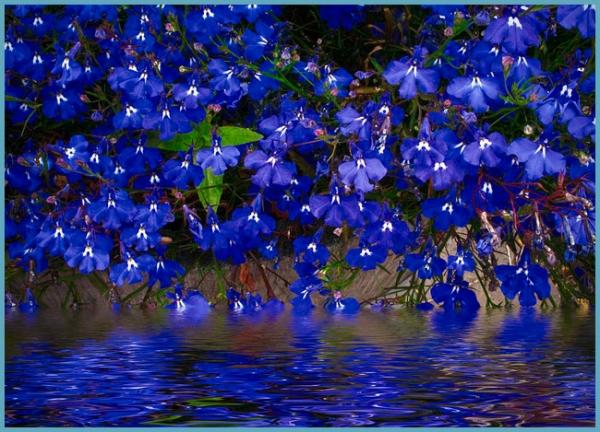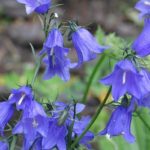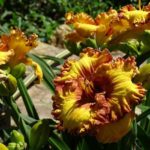Growing perennial lobelia is widely practiced by gardeners from the countries of the former USSR. This is a herbaceous plant that, during pollen, resembles a ball of bright, beautiful and delicate inflorescences of various tones, depending on the variety. The garden creates a fabulous atmosphere of natural grace. To successfully grow a crop, you should become familiar with all its features.
- Description
- Varieties
- Beautiful
- Red
- Purple
- Gherardi
- bird home
- Syphilitic
- Dortman
- Sapphire
- Cascade
- Emperor Willy
- Rosamund
- Red Volcano
- Erinus
- Crystal Palace
- White Lady
- string of pearls
- Marquise
- Riviera
- Cambridge Blue Ice
- Regatta
- Blue fountain
- Reproduction
- Growing seeds for seedlings
- Deadlines
- Picking
- Cuttings and dividing the bush
- Planting in open ground
- Deadlines
- Selecting a location
- Planting scheme
- Care
- Watering
- Top dressing
- Preparing for winter
- Difficulties in care
- As a site decoration
Description
Lobelia belongs to the Campanula family and is an annual and perennial herbaceous plant. Its life span depends on the soil, growing conditions and care. The bush is low, grows up to 25 cm high. The rhizome is fibrous, spherical, with thin and branching stems. The bush is completely covered with small green foliage and densely localized small inflorescences.
One flower blooms in the axils of small leaves. Their color is bright, they come in blue, white, pinkish, violet, purple, and soft bluish. The pollen period occurs at the beginning of June and lasts until September. Lobelia blooms magnificently and elegantly, since all the buds bloom at the same time. After pollen, in place of the flowers, a fruit appears - a seed capsule with a large number of small, weightless seeds. Their germination capacity is maintained for 3 years.
Varieties
There are many varieties of lobelia; below is a detailed description of them. The planting scheme and care required for them are the same, the difference lies only in the appearance and size of the bushes.
Beautiful
Lobelia is distinguished by its large bush size up to 90 cm high. The flowers are large, rich, up to 3 cm in diameter. The variety withstands frost and can be grown even in the North.
Red
Red lobelia or "shiny" is famous for its fiery red inflorescences and sometimes reddish foliage. The variety is used by gardeners to create spectacular garden compositions and flower beds. The variety is less frost-resistant than the Beautiful variety, so the bushes require shelter for the winter. They grow up to 80 cm high.
Purple
Purple lobelia has erect stems; the bush grows up to 1 meter high.The variety is widely grown near ponds, reservoirs, on rocky coasts and even in water. The flowers are collected in a spike, purple in color.
Gherardi
The variety is frost-resistant and can survive the winter without shelter even in northern conditions. The inflorescences are rich, purple-violet. The shape resembles spike-shaped inflorescences.
bird home
Lobelia is distinguished by blue or purple flowers and spike-shaped inflorescences. The variety is successfully used to create flower arrangements; it is planted in hanging pots and flowerpots.
Syphilitic
The species is a bush up to 1 meter high. The flowers are dark blue or purple, densely located on the bush. Previously, the variety was considered medicinal; it was used by patients with sexually transmitted pathologies. As medicine developed, the judgment turned out to be false.
Dortman
Lobelia Dortman is the rarest species listed in the Red Book. Inflorescences of different colors, small sizes. The color of the flowers is soft white with a pinkish tint. In nature, they grow on the sandy shores of reservoirs.
Sapphire
Lobelia Sapphire is a hanging plant; in harsh Russian winters, it is considered an annual. Its stem does not stand on its own, but requires a supporting structure or planting a flower in a flowerpot. The plant is widely used to decorate garden plots, garden paths, gazebos, and garden houses. The bush grows up to 20 cm high, covered with bright leaves. The flowers are blue-violet, spike-shaped.
Cascade
Cascade lobelia is an annual plant; the bush grows up to 25 cm high. The leaves are lush, thin stems, white flowers. Their diameter is 1 cm, they are located in the recess of the leaves.
When lobelia blooms, it looks like a snow-white waterfall, cascading down in thin branches.
Emperor Willy
The bushes grow up to 10 cm high, spherical in shape with a densely flowering bush. The stems are thin, fragile, branched. The leaves are oblong, small, dark green. They are densely planted on the stems, making the bush seem dense. The inflorescences are small in size, two-lipped, cornflower blue in color. Their diameter is 2 cm. The variety is famous for its long flowering, which occurs at the beginning of June and ends at the end of September.
Rosamund
The bushes grow up to 15 cm in height, the shoots are decomposed. The leaves are light green, large, the stem is strong. The inflorescences are reddish with a light base in the middle. Their diameter is about 2 cm. The perennial forms a seemingly dense, cascading bush.
Red Volcano
Lobelia grows up to 80 cm tall. The perennial is branched, with strong stems that do not require staking. The flower is fiery red, the inflorescences are dense. Leaves are bronze and orange. This is the most exotic variety of lobelia.
Erinus
The bush is small in size, up to 15 cm high, covered with small flowers of various colors. They can be bluish, pinkish, white. Variegata is famous for its fragile stems and thin, small leaves of emerald color.
Crystal Palace
The shrub is spherical in shape, the flowers are deep blue, up to 2 cm in diameter. They cover the stems, the leaves are almost invisible. The bushes grow up to 30 cm in height.
White Lady
The plant reaches 15 cm in height, the stems are covered with small white flowers 2 cm in diameter. The buds are compact, located in the axils of the leaves. During flowering, bush lobelia looks like a white carpet.
string of pearls
The bushes grow up to 10 cm in height, the leaves are green and lanceolate. The flowers come in a variety of colors; pollen falls in June to late September.
Marquise
The ampelous lobelia Marquise is distinguished by the cascading shape of the shrub, its shoots hanging down.The inflorescences are deep red, up to 2 cm in diameter. The crop blooms all summer.
Riviera
The annual plant is famous for its bright, small flowers of various colors. When flowering, the leaves are almost invisible. The stems are erect, the bushes grow up to 13 cm in height. This is an early flowering variety.
Cambridge Blue Ice
Lobelia is a dense, dense bush, up to 12 cm high. The inflorescences are rich white, reminiscent of a fluffy cloud during pollen. The leaves are emerald green, dense.
Regatta
The plant has dark green leaves and stems, its height is about 20 cm. The flowers come in a variety of colors: white, cornflower blue, lavender. A lot of inflorescences are formed; during flowering, the bush looks densely covered with flowers.
Blue fountain
Climbing lobelia with flowing shoots, grows up to 35 cm high. The flowers are lilac with a crimson tint. The stems and leaves are rich green and strong.
Reproduction
Lobelia is bred by seeds, cuttings and dividing the bush. Each method involves a specific scheme and differs in the time of planting in open ground.
Growing seeds for seedlings
Lobelia seeds are small in size; when sown in the soil, they must be mixed with sand. After planting, they are not compacted, but rather watered by spraying so that the seeds are not washed away. They can be sown in a specially prepared container, with a drainage layer placed on the bottom. To ensure high germination, do not cover the seeds with soil. Future seedlings need to create greenhouse conditions by placing them in a lighted place. Shoots should develop within 7 days. You can use peat tablets. To plant small lobelia seeds, use a toothpick. When the first leaves appear, pick them.
Deadlines
To obtain seedling material, seeds are planted in February. Early planting requires illuminating the seedlings with a phytolamp, since natural lighting in winter is not enough. If the seeds are planted in early spring, flowering will occur in June.
Gardeners advise preparing seedlings from March. From germination to the beginning of pollen, count 3 months.
Picking
When the seedlings grow up to 3 cm high, their first leaves form, pick. Move seedlings 3-4 at a time to a new location so as not to damage the rhizome. Experienced summer residents use a dessert spoon for this. When caring for young plants, they should be moistened regularly, avoiding stagnation of moisture.
2 weeks before planting, seedlings should be hardened off, acclimating them to the street. Containers with seedlings are taken out into the open air for 2 hours, increasing the amount of stay every day. Before planting in open ground, they must be outside all day.
Cuttings and dividing the bush
For cuttings, an adult bush is required, which is dug up in the fall. Together with the earthen lump, it is transplanted into a spacious container for wintering to be kept indoors. When roots appear at the bottom of the young plant, it can be considered ready for planting in open ground. Cuttings 5 cm tall are pinched.
The division of the mother plant is carried out using a shovel or sharp pruning shears.
You will need another bag or box. The plant should be watered before digging. To preserve the rhizomes, the bushes are dug up, capturing most of the root system. You should not shake off the soil so as not to injure them. Together with the soil lump, the lobelia is placed in a box or bag. Afterwards, they are taken into a room with a temperature of 0 degrees.Usually this is a balcony, loggia, cellar or storage room. Before sending the plant for storage, all shoots are cut off, leaving no more than 7 cm. The flower requires regular moistening.
Planting in open ground
Lobelia should be planted in open soil after the air temperature has stabilized, when it remains stably above 10 degrees Celsius. It is important to comply with deadlines and choose the right place. Land preparation is carried out a couple of days before planting. There should be a distance of 10-15 cm between the bushes. Planting is carried out by transshipment, the contents of the cups are planted.
Deadlines
In early May, planting work is carried out in open ground. In the North, it is better to plant lobelia in the second half of the month. The seedlings are afraid of night frosts and may not survive them.
Selecting a location
Gardeners recommend planting lobelia in a sunny area with loose soil, sandy loam or loam. You must first add nitrogen substances to the soil; the procedure stimulates lush, beautiful pollen. You should not overuse the composition, it will harm the plant.
You can plant flowers in flower pots, vertical beds, pots, or just in the garden.
Planting scheme
If you plant lobelia at a distance of 10-15 cm from each other, a continuous carpet will form. When planted after 25 cm, you will get separate bushes.
Care
Caring for lobelia is simple; you just need to moisten it in a timely manner, loosen the soil, feed the plant, and pinch out the bushes.
Watering
The soil must always be kept moist, especially in hot weather. One bush requires approximately 1.5 buckets of water. Pour the liquid under the rhizome; it should be warm, not icy. During dry periods, irrigation is carried out 2 times a day. When it rains periodically, watering is carried out 3 times a week.
Top dressing
Fertilizing has a positive effect on lobelia; it should be applied 2 weeks after planting the plant in its permanent place. Give preference to organics, with a ratio of 1:10 mullein and nettle infusion. The bushes are fertilized with the above mixture again in August, after cutting.
Preparing for winter
There is no need to cover lobelia for the winter; the bushes are pruned under the rhizome and covered with leaf mulch. In regions where harsh winters prevail, the bushes survive them in a pot, which is located indoors like a greenhouse or basement.
Difficulties in care
Lobelia has strong immunity to diseases and harmful beetles, but if the soil is waterlogged, rotting is possible. Sometimes bushes are subject to powdery mildew, blackleg, rust, rot and mold.
To prevent infection, it is important to maintain moderate irrigation and not to over-moisten the soil. Fungi are destroyed by removing shoots, and the bushes are treated with fungicides.
Lobelia is also attacked by viral diseases like mosaics. They are extremely dangerous and are transmitted through contaminated soil or water.
It is impossible to save a diseased bush; it is dug up and burned. The first symptoms of the virus include the appearance of yellow, brown spots with angular edges on the leaves. Among the beetles, aphids, slugs, and spider mites sometimes attack the flower.
- Aphids are destroyed by spraying with a solution of laundry soap.
- Slugs and snails are removed with bleach. Containers with this substance are placed around the lobelia.
- Spider mites can be removed by using tincture of garlic or tobacco. If unconventional methods do not help, they resort to chemical acaricidal agents.
Inexperienced gardeners still encounter waterlogging of the soil. This is fraught with rotting of the rhizome and death of the flower.
As a site decoration
Bright bushes are widely used for garden decoration.They can be combined with low-growing perennials such as iberis, alyssum, viola, and carnation. Lobelia looks gorgeous on a green lawn, among rockery stones.

